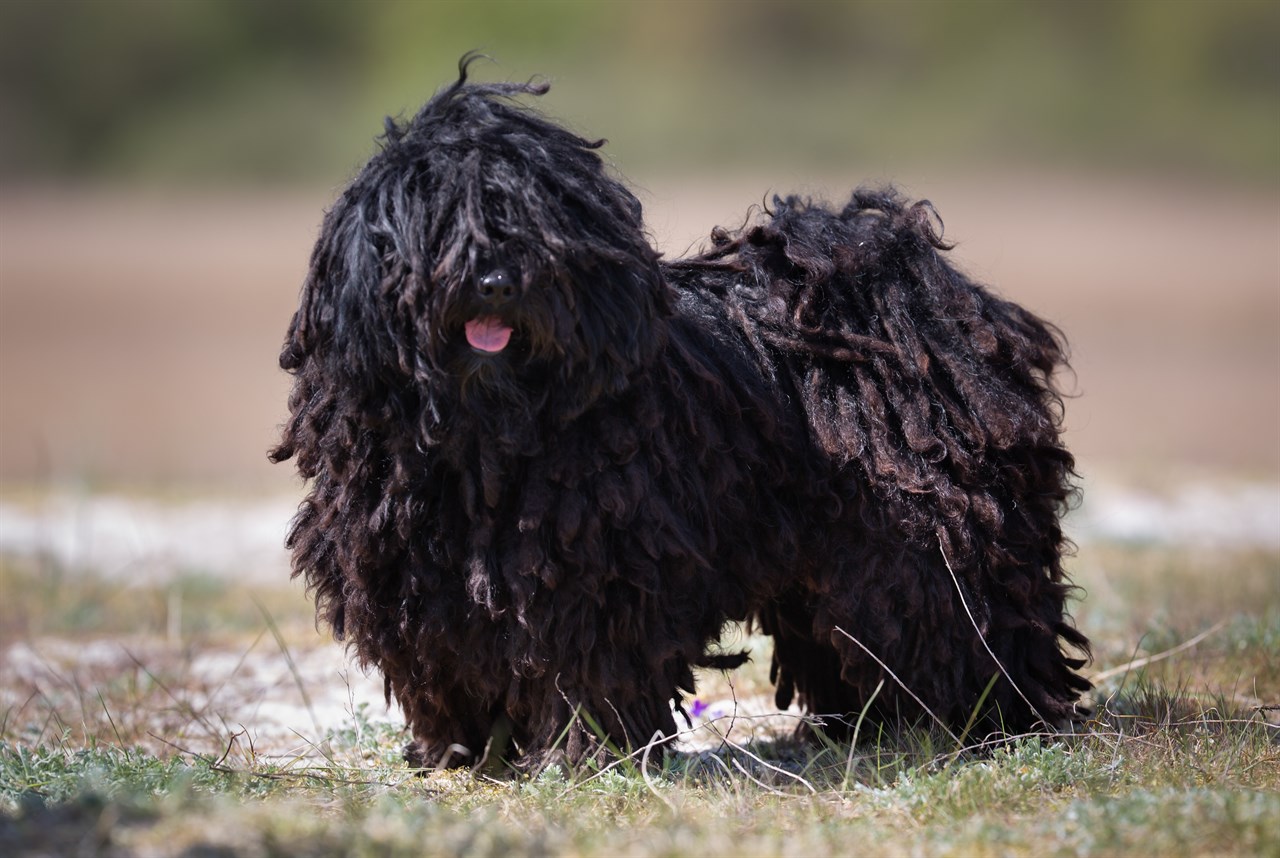The Puli: A Unique and Fascinating Hungarian Herding Breed

Introduction
The Puli, with its distinctive corded coat and lively personality, is a breed that captures the imagination of dog enthusiasts worldwide. This Hungarian herding breed may be small in stature, but it has an enormous presence. In this comprehensive piece, we will delve into the history, appearance, characteristics, and unique features of the Puli dog breed.
Breed History
A Heritage of Herding
The history of the Puli dates back centuries to Hungary, where it was primarily bred for herding sheep and cattle. Its roots can be traced to the ancient Magyar tribes, who settled in the Carpathian Basin around 800 AD. These early Pulis worked closely with Hungarian shepherds, using their agility and intelligence to control livestock.
The Puli's Role in Herding
The Puli's herding abilities are truly remarkable. With their nimble movements and distinctive appearance, they could effectively corral livestock, often working independently with minimal guidance from their human counterparts. The breed's agility and quick decision-making skills made it indispensable to Hungarian farmers, who relied on them for generations.
Also Known As
The Puli is also known as the Hungarian Puli or Hungarian Water Dog by lovers of the breed.
Breed Group
The Puli belongs to the Herding Group, as classified by major kennel clubs like the American Kennel Club (AKC) and the Fédération Cynologique Internationale (FCI). This group is composed of breeds known for their ability to control the movement of other animals, particularly livestock. Pulis exemplify the characteristics of this group, displaying herding instincts and intelligence.
Breed Size
Pulis are small to medium-sized dogs. Adult males typically stand between 40.6 to 43.1 centimetres at the shoulder, while females are slightly smaller, measuring 38.1 to 40.6 centimetres. In terms of weight, Pulis typically range from 11.3 to 15.8 kilogrammes, with females being on the lighter side.
Breed Coat, Colour, and Appearance
The Iconic Corded Coat
What sets the Puli apart from most other breeds is its unique corded coat. This dense, woolly coat forms naturally as the puppy's soft fur slowly mats and cords together. These cords can vary in length and thickness but give the Puli its unmistakable mop-like appearance. While the cords can reach the ground when fully mature, they are surprisingly lightweight and insulating, providing protection against harsh weather conditions.
Colours of the Puli
Pulis come in various coat colours, including black, grey, white, and cream. However, the most iconic Pulis are the solid black ones, which make the cords stand out even more. Black Pulis often resemble walking mops, adding to their charm and intrigue.
Compact and Athletic
Beyond their distinctive coat, Pulis have a compact, square-shaped body. They have a deep chest, a level back, and a curled tail carried tightly over the back. Their head is wedge-shaped with expressive, dark eyes that convey their intelligence and alertness. Their ears are V-shaped and fold over, giving them an endearing, almost teddy bear-like appearance.
What Kind of Dog Is a Puli?
A Puli is a highly intelligent and agile herding dog known for its distinctive corded coat. This breed is characterised by its compact build, energetic personality, and strong herding instincts.
What Are Puli Dogs Known For?
Puli dogs are renowned for their exceptional herding skills, agility, and unique appearance. They are hardworking, devoted, and excel in various dog sports and activities.
Where Did the Puli Dog Come From?
The Puli originated in Hungary, where it played a crucial role in herding livestock for centuries. It is a breed deeply rooted in Hungarian culture and history.
Why Do Puli Dogs Look Like Mops?
The Puli's mop-like appearance is a result of its naturally forming corded coat, which helped protect it from the elements while herding livestock. This unique coat is not only functional but also a defining characteristic of the breed.
Does a Puli Have Hair or Fur?
Pulis have fur, not hair. Their dense, corded coat is made up of long, fine strands of fur that mat together, creating the cords. This fur provides insulation and protection, especially in the harsh Hungarian climate.
How Rare Is a Puli?
Pulis are considered a relatively rare breed, especially outside of Hungary. While they have a dedicated following among dog enthusiasts, they may not be as common as some other breeds.
What Is the Difference Between a Puli and a Komondor?
Both the Puli and the Komondor are Hungarian herding breeds known for their unique coats, but they have distinct differences. Pulis are smaller and more agile, while Komondors are larger and known for their guarding abilities. The Puli has a corded coat, while the Komondor's coat forms large, matted cords that resemble dreadlocks.
Conclusion
In conclusion, the Puli is a captivating breed that embodies the rich heritage of Hungarian herding dogs. With its iconic corded coat, compact build, and boundless energy, the Puli continues to captivate the hearts of dog lovers around the world. This breed's history, unique appearance, and exceptional herding abilities make it a truly remarkable and cherished member of the canine world.
Continue reading our Puli in-depth articles
- Puli Temperament and Behaviour
- Puli Training and Socialisation
- Puli Toilet Training
- Puli Barking Habits
- Puli Grooming Requirements
- Puli Shedding Behaviour
- Puli Sleeping Behaviour
- Puli Diet and Feeding Requirements
- Puli Average Lifespan
- Puli Exercise Requirements
- Puli Common Health Issues
- Puli Suitability Guide
- Puli Advantages
- Puli Disadvantages
- Puli Cost to Buy and Own
- Puli Clubs and Links
- Selling Puli Puppy Litters and Dogs
- Buying Puli Puppies and Dogs
- Puli Alternatives